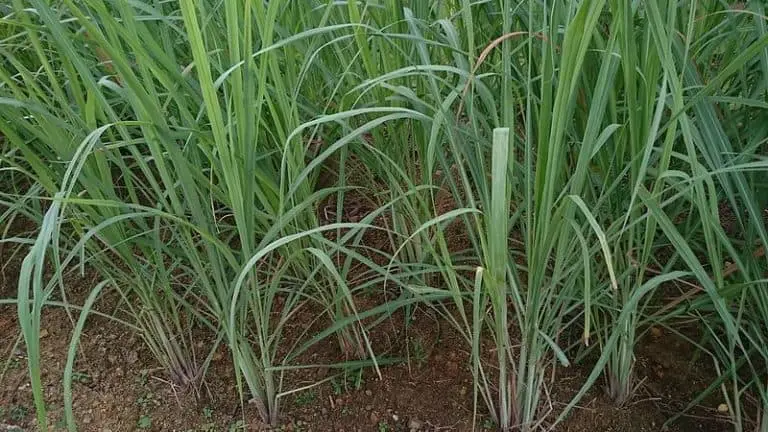Use Crop Rotation for a Healthy Organic Garden
Getting land ready for farming takes a bunch of effort and a lot of elbow grease. Keeping the land lively and fruitful is absolutely key. Over the years, farmers have dreamed up clever ways to boost the land’s well-being.
Most of those methods included the rotation of crops in some way. While more ancient methods included rotation of grazing livestock, later developments rotated crops based on how the plants interact with the soil. This article will tell you about crop rotation based on that premise. Whether you’re growing a small backyard garden with a few small beds or you’ve got acres of arable land devoted, the principles of crop rotation outlined here can help you keep that land productive for generations to come.

Contents
Why Use Crop Rotation
Much of what we know about crop rotation has gone out of practice due to the advent of chemical fertilizers, pesticides, and herbicides. When you choose to rotate crops, your need for chemical options to promote soil health and control pests and weeds can be greatly reduced or even eliminated. Extreme mono-cultures – those with only one type of thing living in an area – rarely exist in nature. It’s perhaps not as efficient for growing food in bulk, but it allows for a more balanced ecosystem overall. However, through the practice of crop rotation, you can return some of the balance to your land, reduce your need for chemical supplements, and overall create a healthier food supply.
Leafy Plants
These plants include any that you eat the leaf or flower of. They will consist of spinach and lettuces, but also the Brassicas – such as broccoli and cauliflower. These plants generally need large amounts of nitrogen. Still, they will appreciate well-fertilized soil to produce large luscious leaves that hold moisture well and prevent leaf bitterness.
Fruit
These plants include those from which you eat the fruit. These include the ever-popular tomato, but also the eggplant, cucumber, and squash family. These plants need both phosphorus to encourage healthy flowering and fruiting and calcium to prevent flower rot. These plants are sometimes called “heavy feeders” because they require many soil nutrients to produce flowers and fruit.
Roots
Root plants are fairly obvious but include one major and important exception. These are (almost) any plant from which you eat the root and include the carrot, radish, turnip, and beets. They also include the celery family, kohlrabi, garlic, and onions.
These plants require a higher than average amount of potassium and are thankful for extra phosphorus. Be cautious with a nitrogen level that is too high, as that will encourage great leafy development at the expense of the root.
The notable exception to the root family is the potato group. Botanically, potatoes are in the same group as tomatoes. As such, they are commonly subject to the same set of diseases and pests, so when you’re considering a rotation, plant them together and rotate them together.
This will help prevent a set of problems from setting in during two separate rotation cycles.
Legumes
Legumes add nitrogen to the soil. They include beans, peas, and peanuts. They appreciate airy soil, so they have access to nitrogen. For this benefit to improve the soil, the spent legume plants should be tilled under so that the nitrogen-filled roots break down and leave their nutrients.
Four Crop Rotation
In a typical four-crop rotation system, one type of vegetable follows the next, regardless of whether you’re using rows or beds. Imagine your planting areas (let’s say rows) from left to right, with the first row being number 1, the second being number 2, the third being number 3, and the last being number 4. You then put leafy veggies in row 1, fruiting veggies in row 2, root veggies in row 3 and legumes in row 4.
Once your growing season is complete, you till under the spent plants, add compost, and let it sit until you’re ready to plant again. Then you move every group to “left” by one position; so now your fruits get planted in row 1, roots are in row 2, legumes are in row 3, and leafy veggies get bumped to row 4.
This system allows for two things. First, your legumes will fix nitrogen into the soil every 4th planting cycle. Second, you will move plants susceptible to particular pests or diseases so that they are essentially “starved out” and don’t take hold of your garden.
Five Crop Rotation
A five-crop rotation system is similar except for the incorporation of livestock and integrated compost handling. Rather than maintaining a separate area for livestock and/or compost, you essentially create a fifth “row” in your garden with two functions.
First, this is where you will put all the organic materials that would normally go in a compost bin. Second, it will house the animals you want to provide manure.
If you are planting in rows, larger animals like goats are surrounded by an electric fence. If planting in beds or smaller holdings, you could use chickens in a mobile “tractor.”
The way it works is that the livestock follows the legumes. The animals – especially chickens – break up compacted soil and organic materials, provide manure to enrich the soil further, and eat bugs that are likely to feast on the leaves of your leafy veggies.
There is one important caution when using this method. Ensure at least 90 days between livestock and the planting of above-ground crops and 120 days for root crops. This is to prevent the contamination of food from any manure-borne pathogens. For this reason, some people who plant continuously year-round choose to follow the integration of a sixth area left fallow for a growing season.
This allows for extra time between livestock integration and the planting of leafy vegetables.
Conclusion
Since the beginning of agriculture, farmers have been searching for ways to prevent weeds, disease, and pests from taking hold of their plants while also keeping their land productive.
Chemical fertilizers, herbicides, and pesticides seemed to provide a quick and easy answer, but the use of these substances has had other unintended consequences.
Thankfully, there is another way. By hearkening back to age-old methods while incorporating our increased understanding of plant and animal science, we can successfully improve the productivity and health of our crops and our land at the same time.
When incorporating livestock into the system, we can also improve our waste management and reduce the total number of inputs needed to grow the same amount of food.




